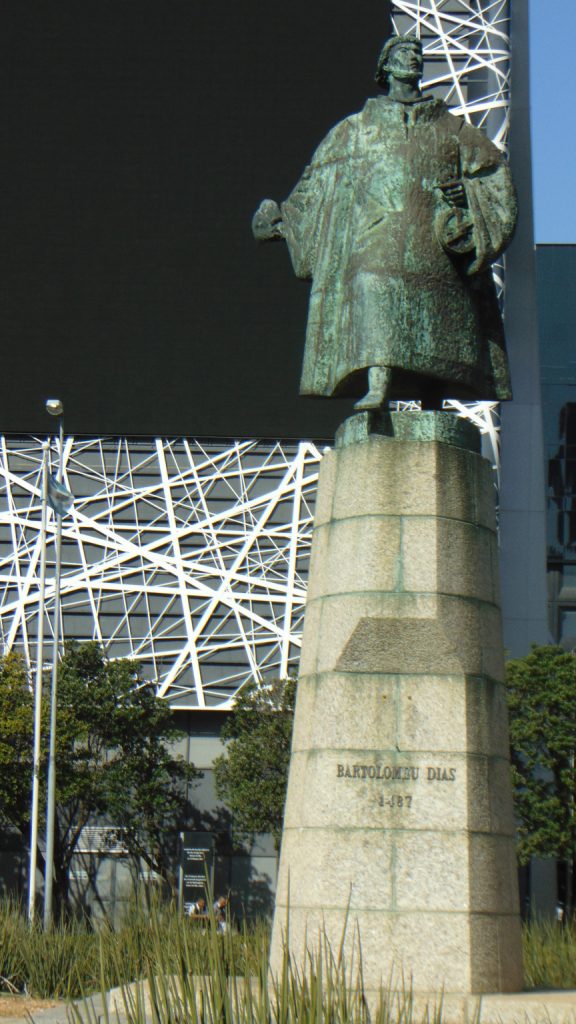The Spice Wars Part Eleven – By Any Means
February 18, 2022The Spice Wars Part Thirteen – Hustling for Power
February 20, 2022
The Westen Cape Government’s Business Development in a street named after the man who initiated Africa’s other slavery diaspora – a largely unacknowledged on that drastically affected South Africa’s future.
By Satish Sekar © Satish Sekar (February 2nd 2022)
The Quest for Empire
The Banda Islanders entered the 17th Century in control of their destiny. They had recently had their first contact with the Dutch. They even saw them as protectors against the Portuguese – the first Europeans to discover the sole source of nutmeg at the time. They had a monopoly on the production of nutmeg which made it a coveted commodity that turned the first calamitous trip into a worthwhile endeavour.
The Portuguese had spent the best part of a century trying to secure a monopoly on the trade of the spice. The Banda Islanders had no interest in granting a monopoly to any traders, as they knew that competition increased the price, and the Dutch wanted a monopoly while offering worse terms than the Banda Islanders were already getting.
Changing circumstances in Europe led to the Spice Wars and atrocities being visited on the Banda Islanders. Portugal bowed out of the battle for control of the nutmeg and mace trade. But there was no shortage of suitors as Portugal lost its advantage. The Dutch proved determined, especially after the Dutch East India Company (DEIC) was founded in 1602. Two years earlier the English East India Company was founded. Both coveted the Banda Islands as control of nutmeg trade offered great riches.
The Struggle for Empire
The Banda Islands played a very important role in the growing conflict between two emerging European powers at the time. Both were small nations in the European context at the time. Both wanted empires and that required colonisation, but both seemed more likely to be allies at first due to the religious and political landscape in Europe. The Netherlands was under Spanish rule in the 16th Century, but religious tensions simmered.
Similarly, England was a small nation traditionally at loggerheads with France and to a lesser extent Spain. While the Catholic nations were constantly bickering for supremacy, their religious fervour meant their opposition to Protestantism would trump their rivalry. The same applied to the Protestant nations, but like France and Spain, England and Netherlands defied logic.
Well actually, it didn’t. Both saw their survival as requiring dominance, especially as their size meant they had to fight hard and dirty or they would be overwhelmed. They became allies of convenience and enemies of convenience. That explained the new realities and the major conflict between them – the one few know about it as it took place thousands of miles away.
Punching Above Their Weight
In 1566 the Dutch rebelled against the rule of Phillip II of Spain, which began the 80 Years War and led to the decline of Antwerp as the dominant commercial centre of the Low Countries and rise of Amsterdam as the new regional financial hub. It also signalled the beginning of the rise of the Netherlands as a world power. But its size posed problems. Surrounded by hostile powers, there was little option but to punch hard above its weight.
The same applied to England – even Britain, although that union took another century to begin its rise to one of the most dominant empires the world has ever seen. Both were Protestant and threatened by the Catholic empires of France and Spain in particular. England had recently defeated the Spanish Armada in 1588 and attacked Cadiz in 1596. The Netherlands had been fighting the Spanish for thirty years – a very odd conflict as Spanish failure to pay their troops led to mutinies and selling captured land back to the Dutch.
It had serious implications throughout Europe as the Dutch justification was that Spain had not fulfilled its duties. As such the Divine Right of Kings was challenged and ultimately beaten by the establishment of the Dutch Republic in 1588. Sixty years later Europe accepted a monarchy-shorn Dutch Republic, ushering in a serious challenge to the Divine Right of Kings. England was fighting a Civil War on that very issue that would result in the execution of King Charles I the following year.

The Dutch also had a long standing war against Portugal from 1602-1663 with varied results. The Portuguese won Brasil, Angola and Macau while the Netherlands won the battles in the East Indies and others in Asia and South Africa. The English profited from these wars to belatedly gain possession of Ceylon and Malacca (Malay Peninsula), which the Dutch had prised loose from Portuguese rule.
During this war the Dutch and Portuguese fought for control of Elmina in the Gold Coast (Ghana). These battles were for control of the Trans-Atlantic Slave Trade. In 1626 a Dutch attempt to capture the town resulted in a terrible defeat for the Dutch, but the Dutch West India Company (DWIC), which operated in the West Indies, as the DEIC did in the East Indies saw the potential of controlling the slave trade in Africa and captured the prized base in 1637.

However, the conflict ultimately favoured the British. Eventually, the Gold Coast fell under British influence and with it control of the trans-Atlantic slave trade in the 17th Century, meaning neither belligerent over Elmina in the 1620s-1640s (the Netherlands and Portugal) reaped the full benefit of the amoral trade. Meanwhile, Dutch and English interests diverged enough for four Anglo-Dutch Wars to occur. The East Indies – Banda Islands in particular – proved to be one of the most important and showed that Dutch colonialists were every bit as ruthless and brutal as their competitors.

